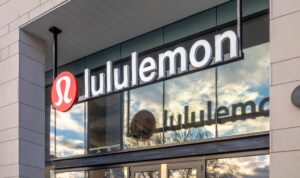
TPOPhoto/Depositphotos.com
November 12, 2025
Will Shrinking Help Puma Re-Spark Brand Heat?
Puma recently unveiled a transformation plan that involves significantly reducing its product range and distribution in order to revive “brand heat,” return to growth in 2027, and ultimately establish itself as a top-three global sports brand.
Moves to reduce SKUs and distribution from less-desirable accounts are often used by consumer brands losing appeal.
“Puma has to address the fact that it has become too commercial, which is reflected in muted brand heat, low distribution quality, and a product offering that is not cutting through in the market,” said Arthur Hoeld, a former Adidas executive who in April became Puma’s CEO, in the brand’s third-quarter results statement.
On a call with analysts, Hoeld noted that the brand commissioned a study at the beginning of the year that ranked Puma as “less relevant” than eight other brands in the sports space.
One reason cited for the diminished brand heat is because Puma’s direct-to-consumer (DTC) business is only 30% of sales, while most competitors are at 40%. The DTC de-emphasis “limits our opportunity to showcase our products, to excite consumers directly with our storytelling, and also determine how we’re going to show up in the marketplace,” said Hoeld.
Puma Making Strategic Moves To Recapture Consumer Attention
While targeting higher growth in e-commerce and brick-and-mortar channels to match competitors, Puma is scaling back distribution at “undesirable” wholesale accounts. Hoeld noted that three of the brand’s top 10 customers are “mass merchants,” or chains focusing on off-price selling — often selling last season’s merchandise, alongside limited brand control and broad distribution.
He said the rationalizing distribution, and reducing currently-bloated inventory levels, will impact top-line growth, but is critical to improving pricing integrity. Hoeld said, “We have started to clean up. That is something which we’ll continue to do in the next couple of quarters as well, actually. And also, most notably, we have reduced the discounts in our very own channels.”
Puma also plans to “significantly reduce” its product range, with Hoeld noting that the brand’s extensive range of products has led to its “icons,” or hero products and innovations, not standing out in the marketplace. Hoeld said, “Consumers don’t really know when you’re asking them about Puma, what is the key product that that brand stands for? And that is certainly a huge opportunity for us.”
Hoeld also said Puma, in the past, had a tendency to scale franchises “too fast and too soon” — a move that limited the brand’s commercial potential. He added, “We’re not efficient enough when it comes to our lifecycle management.”
Puma Seeks Better Storytelling, Unified Teams To Reach New Heights
Toward that end, Puma is reorganizing its product, marketing and sales teams to support a more unified go-to-market approach and elevated storytelling. Hoeld said, “We will be very focused to really have fewer stories out there that cut through and hit the nerve of today’s consumers. All of that with a clear ambition that each and every initiative that we’re investing behind will have to create a brand halo effect for the entire Puma brand.”
The restructuring will also involve slashing its cost structure, including cutting 20% of its corporate workforce.
Hoeld stressed that Puma has a significant opportunity to better capitalize on its 77-year history, credibility across sports, and breakthrough innovations, but said the changes will take time. He told analysts, “We call the year of 2026, a year of transition. Our absolute goal and our commitment is to grow again as a brand in 2027. We clearly want to accelerate beyond the industry momentum and gain ground again versus competition.”
Discussion Questions
Which of the steps being taken will be most critical in helping Puma regain brand relevance?
What are the common missteps brands make when trying to reignite brand heat?
What advice would you have for Puma?
Poll
BrainTrust
Tom Ryan
Managing Editor, RetailWire
Recent Discussions







Puma have not controlled their brand well and have been chasing growth in a scattergun way. The result is a tarnished brand that is not cutting through with consumers, especially in a market where overall demand is softer. Rebuilding the brand and injecting more fashionability is critical in the US. Puma is pulling back from discount channels, which will help with this. However, doing more direct selling is only part of the solution. Puma needs to develop a stronger presence in the channels where consumers shop and at key retailers like Dick’s. Unless it does this, it will struggle to register on the consumer radar.
Much like a 12-year old asking “how can I be cool?”, this (brand “heat”) isn’t something you achieve by setting out to do it, it’s the result of having done other things correctly; in this case having products people want, that they know about, and can find readily. So yes, all these steps matter, but without the first, the others have little meaning. There’s nothing inherently wrong with what Puma has outlined – tho something like “reduce bloated inventory” is clearly addressing a result rather than a cause – but it seems to have curiously little to say about the prouct lines themselves (other than that there are too many of them)